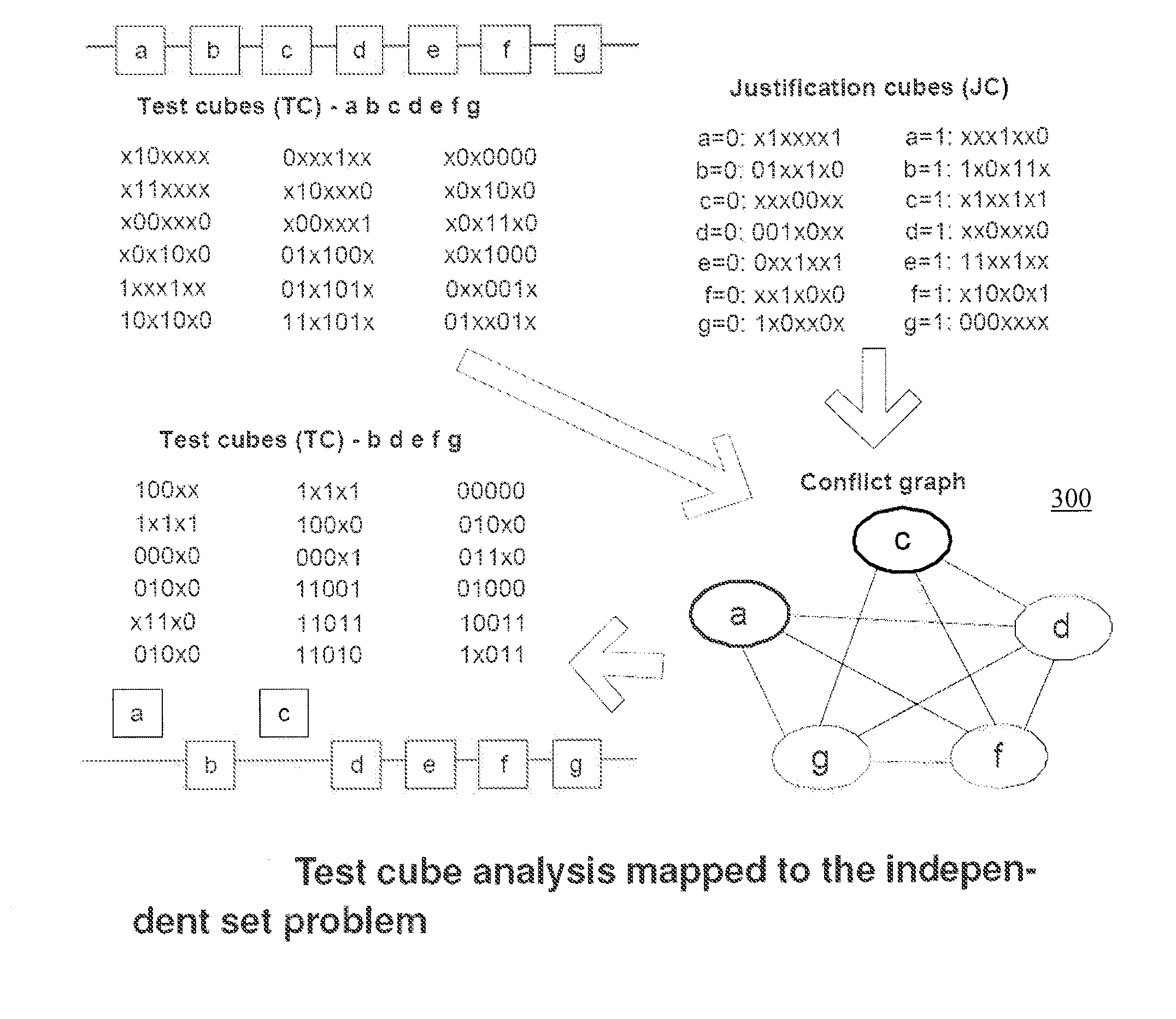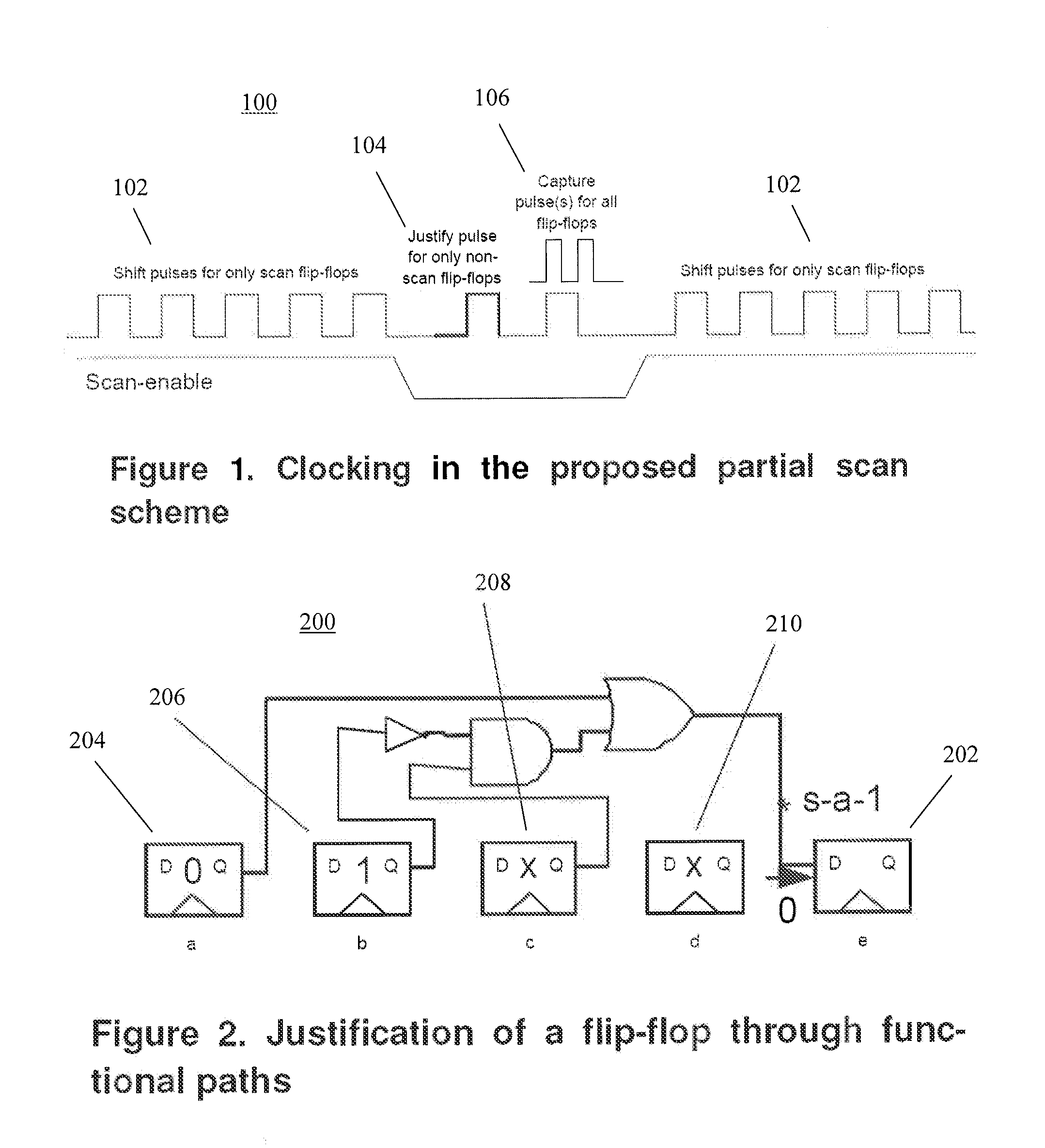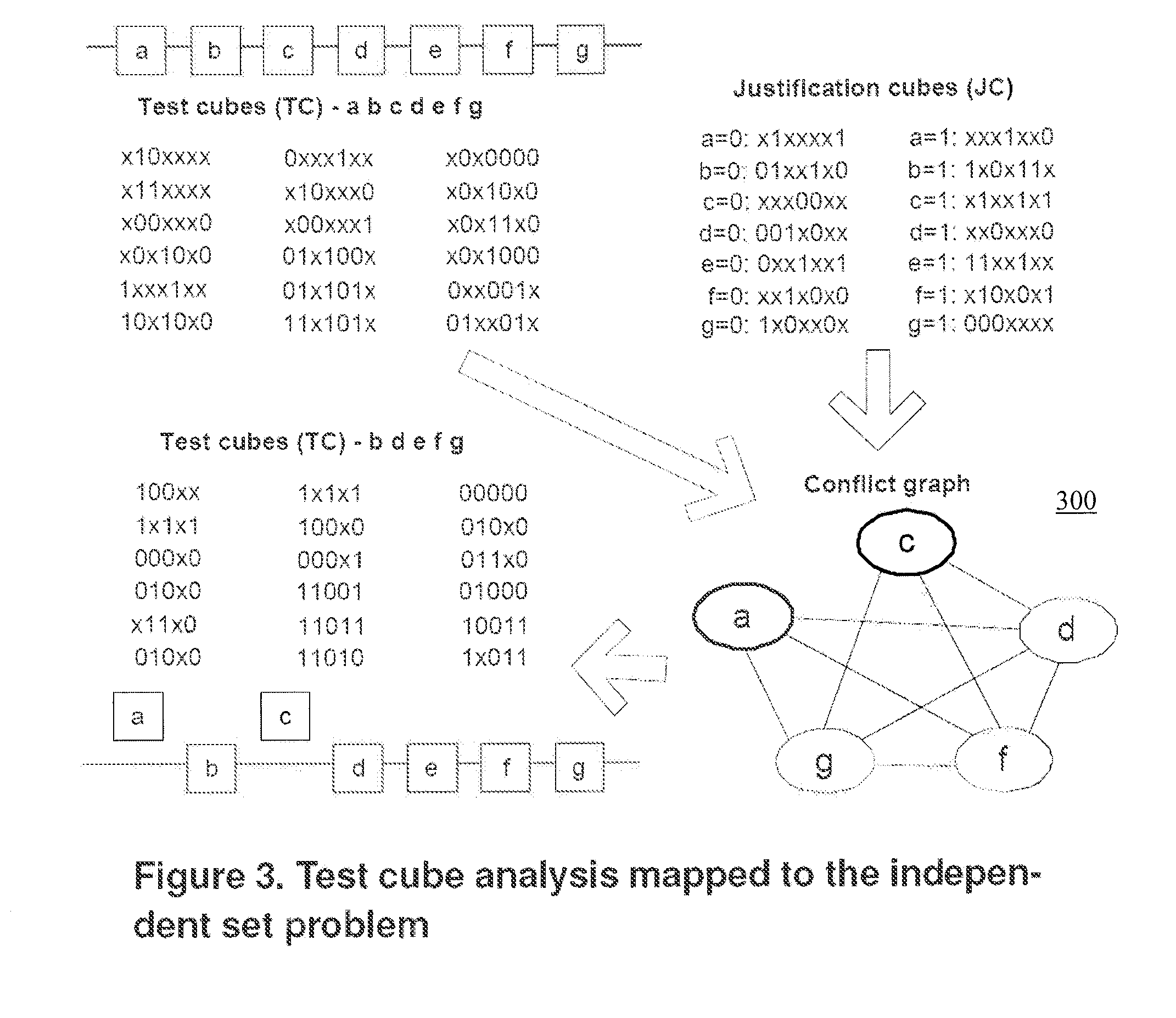Architecture, system, method, and computer-accessible medium for partial-scan testing
a partial scan and architecture technology, applied in the direction of testing circuits, resistance/reactance/impedence, instruments, etc., can solve the problems of performance and test costs, controllability and observability of flip-flops can be compromised, and the computational cost of sequential atpg typically cannot be afforded, so as to achieve the effect of reducing the cost of full scan, avoiding the effect of affecting the performance of the full scan
- Summary
- Abstract
- Description
- Claims
- Application Information
AI Technical Summary
Benefits of technology
Problems solved by technology
Method used
Image
Examples
Embodiment Construction
[0011]Exemplary embodiments of the present disclosure can provide a test cube analysis driven partial scan scheme. The exemplary technique can operate on a set of test cubes generated by a combinational Automatic Test Pattern Generation (ATPG) tool, and can identify a maximum number of flip-flops that can be converted to non-scan while delivering the quality of full scan.
[0012]By identifying the conditions to recover the controllability and observability compromised due to partial scan, and by formulating these conditions via test cube operations, an exemplary computationally efficient partial scan scheme that is compatible with the conventional ATPG flow can be provided. Upon the identification of the flip-flops that can be converted to non-scan, the test cubes can be post-processed to ensure the delivery of the original set intact into the flip-flops. This simple exemplary post-processing procedure, which can be based on cube merge operations, can reduce or even eliminate the need...
PUM
 Login to View More
Login to View More Abstract
Description
Claims
Application Information
 Login to View More
Login to View More - R&D
- Intellectual Property
- Life Sciences
- Materials
- Tech Scout
- Unparalleled Data Quality
- Higher Quality Content
- 60% Fewer Hallucinations
Browse by: Latest US Patents, China's latest patents, Technical Efficacy Thesaurus, Application Domain, Technology Topic, Popular Technical Reports.
© 2025 PatSnap. All rights reserved.Legal|Privacy policy|Modern Slavery Act Transparency Statement|Sitemap|About US| Contact US: help@patsnap.com



